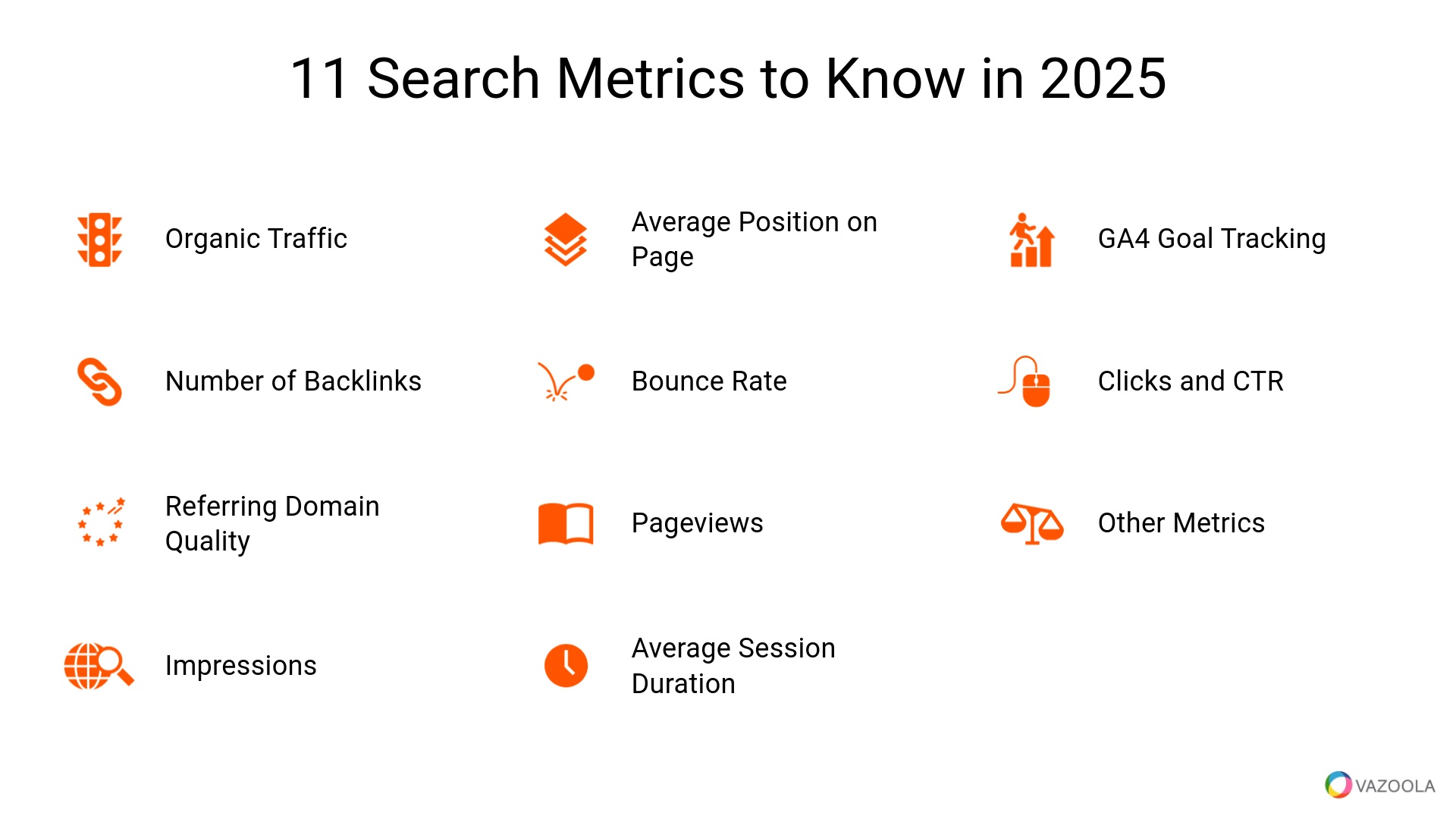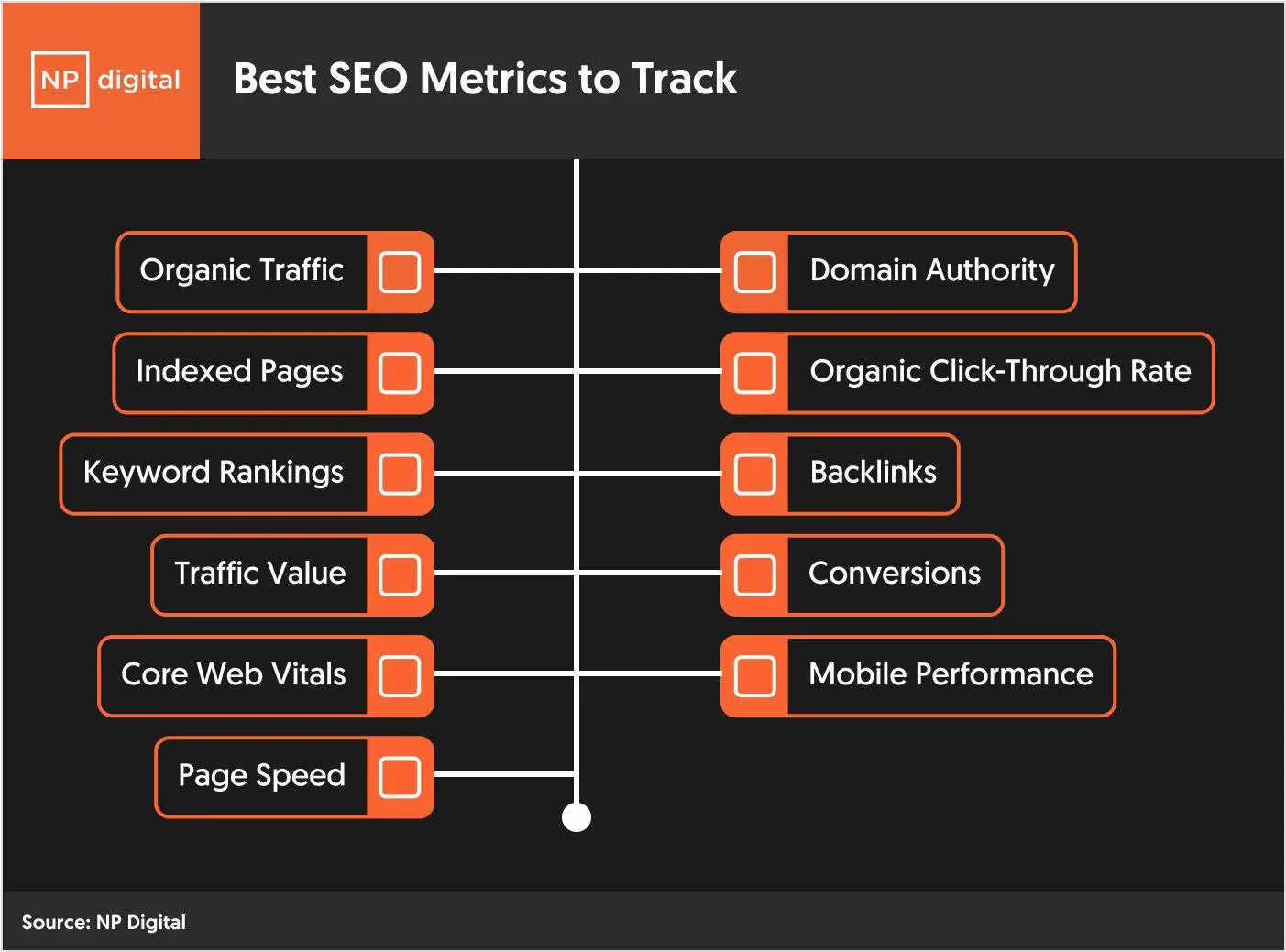Key SEO Metrics to Monitor
Effective SEO monitoring requires tracking a set of core metrics that reflect both technical performance and business impact. Here’s a breakdown of the metrics you listed—Organic CTR, Bounce Rate, Pages per Session, Domain Authority, and Conversion Rate—along with their significance and how they fit into a comprehensive SEO strategy.
| Metric | Definition | Why It Matters | How to Track |
|---|---|---|---|
| Organic CTR | Percentage of users who click your listing after seeing it in organic search | Indicates how compelling your titles/descriptions are; higher CTR = more traffic without higher rankings. | Google Search Console, Google Analytics. |
| Bounce Rate | Percentage of visitors who leave after viewing only one page | High bounce rate may signal irrelevant content or poor user experience. | Google Analytics. |
| Pages per Session | Average number of pages viewed per visit | Measures engagement; higher values suggest users find your site valuable. | Google Analytics. |
| Domain Authority | Moz’s proprietary score predicting a site’s ranking potential | Higher scores correlate with stronger backlink profiles and better rankings. | Moz Link Explorer (paid tool). |
| Conversion Rate | Percentage of organic visitors who complete a desired action (e.g., purchase, sign-up) | Directly ties SEO efforts to business outcomes. | Google Analytics, CRM systems. |
Additional Context
- Organic Traffic: While not listed in your query, organic traffic is foundational—it shows how many users find your site via search engines, reflecting the reach of your SEO efforts.
- Keyword Rankings: Tracking where your target keywords rank helps identify opportunities and measure visibility improvements.
- Backlinks: The quantity and quality of external sites linking to yours influence Domain Authority and overall site credibility.
- Core Web Vitals: Technical metrics like loading speed and interactivity impact user experience and rankings.
How These Metrics Work Together
- Organic CTR and Bounce Rate help assess the effectiveness of your meta content and landing pages. A high CTR with a low bounce rate suggests your listings accurately match user intent and deliver value.
- Pages per Session indicates how engaging your site is. More pages per session generally means users are exploring your content, which search engines interpret as a positive signal.
- Domain Authority provides a snapshot of your site’s overall strength in the eyes of search engines, influenced heavily by backlinks.
- Conversion Rate is the ultimate measure of ROI from SEO, showing whether increased traffic translates into business results.
Tools for Tracking
- Google Search Console: For organic CTR, impressions, clicks, and technical issues.
- Google Analytics: For bounce rate, pages per session, conversion rate, and detailed traffic analysis.
- Moz: For Domain Authority and backlink analysis.
- Paid SEO platforms (e.g., SEMrush, Ahrefs): For advanced keyword tracking, backlink analysis, and competitive benchmarking.
Best Practices
- Monitor trends monthly: Daily fluctuations are normal; focus on monthly patterns for strategic decisions.
- Align metrics with goals: Choose KPIs that reflect your business objectives (e.g., e-commerce sites should prioritize conversion rate).
- Combine qualitative and quantitative data: Use metrics to identify issues, but also gather user feedback for context.
Summary
Tracking Organic CTR, Bounce Rate, Pages per Session, Domain Authority, and Conversion Rate provides a balanced view of SEO performance, from visibility and engagement to technical health and business impact. Use these metrics alongside foundational ones like organic traffic and keyword rankings to guide data-driven optimization and demonstrate SEO’s value to stakeholders.





